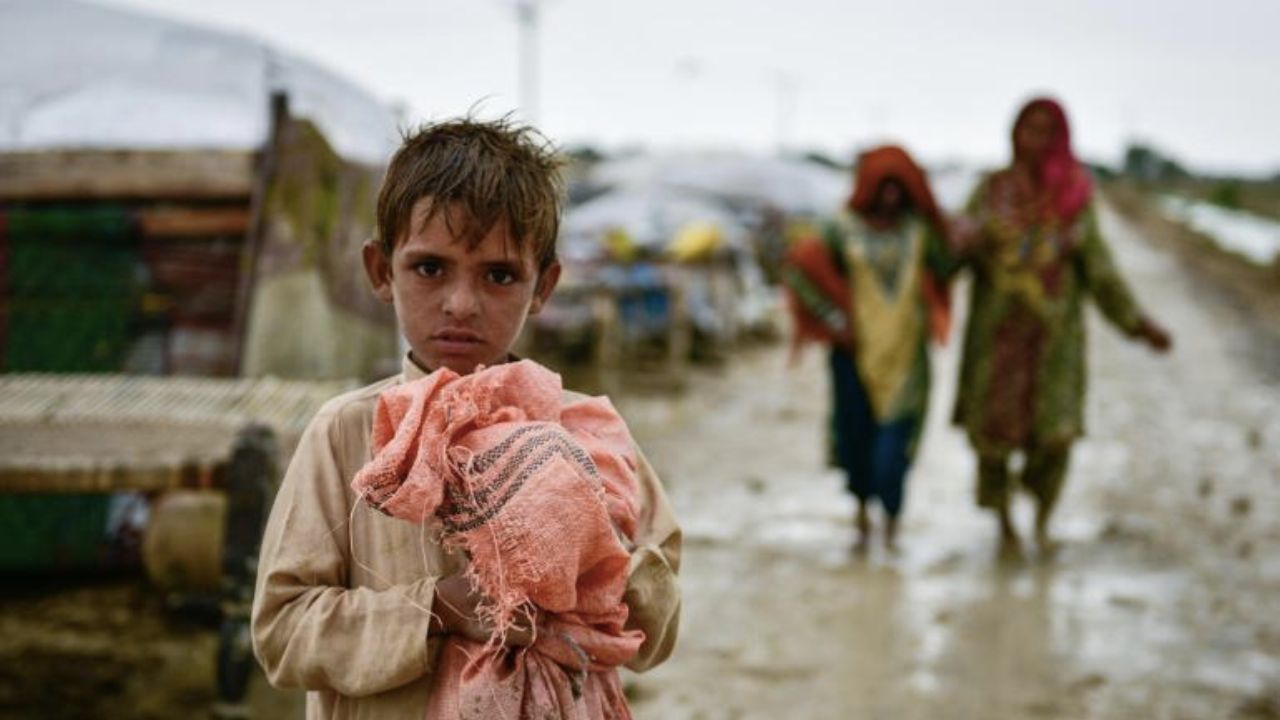Pakistan’s “super floods” have affected an estimated 16 million children, with at least 3.4 million of them in need of immediate assistance to save their lives, the United Nations has said.
According to a statement released on Friday by Abdullah Fadil, a representative of the United Nations International Children’s Emergency Fund (UNICEF), the situation in flood-affected areas is extremely dire, with malnourished children suffering from diarrhoea, dengue fever, and a number of excruciating skin diseases, PTI reported.
Fadil just returned from a two-day visit to Sindh’s flood-affected areas and reported that at least 528 children had died as a result of the flooding.
“Each and every one of these deaths is a tragedy that could have been averted,” he said.
“An estimated 16 million children have been impacted by these ‘super floods’ and at least 3.4 million girls and boys remain in need of immediate, lifesaving support.
“Young children are living out in the open with their families, with no drinking water, no food, and no livelihood, exposed to a wide range of new flood-related risks and hazards – from damaged buildings, drowning in flood waters and snakes. The vital infrastructure that children so rely on has been destroyed and damaged, including thousands of schools, water systems and health facilities,” he said.
International aid continues to filter in as the flood disaster’s scope grows worse.
“The sad reality is that without a massive increase in support and aid, many more children will lose their lives,” the UNICEF representative said.
Many of the mothers have kids that are extremely underweight because they themselves are anaemic and malnourished. He claimed that mothers are too weak or unwell to breastfeed.
As temperatures in certain parts reach 40 degrees Celsius, millions of families have been evicted from their houses and are now living in conditions where they have little more than rags to protect them from the blazing sun.
“Many families have been forced to seek shelter on slivers of higher ground, often alongside roads putting children at risk, as lower land is covered by huge expanses of stagnant water, extending as far as the eye can see. The additional threats of snakes, scorpions and mosquitoes are ever-present in the area,” Fadil said.
“Whilst the number of children lost in these floods continues to grow, Unicef is doing everything it can to support children and families affected and protect them from the ongoing dangers of water-borne diseases, malnutrition and other risks,” he added.
Government data revealed on Friday that over 90,000 people were treated for infectious and water-borne diseases in the flood-affected areas of Sindh in a single day, despite the fact that more than 1,500 people had died as a result of the flooding.
According to a Sindh government report, diseases like malaria, dengue fever, diarrhoea, and skin conditions have spread to flooded areas.
According to the National Disaster Management Authority, the unprecedented rains that caused the floods have resulted in 1,545 fatalities and 12,850 injuries.











































